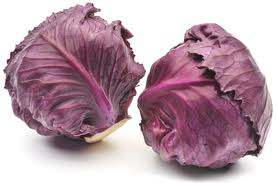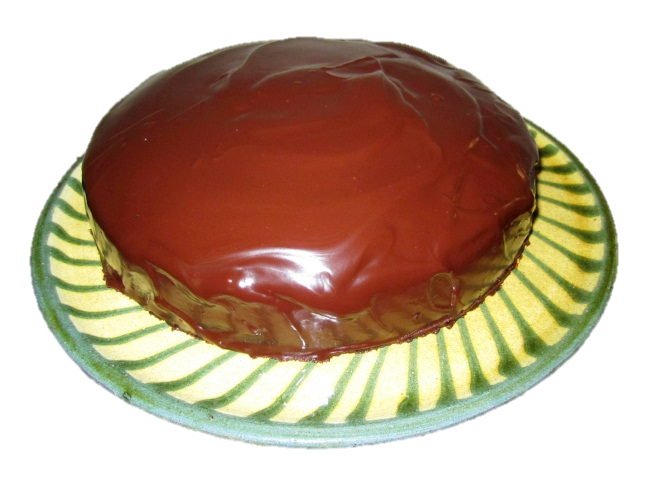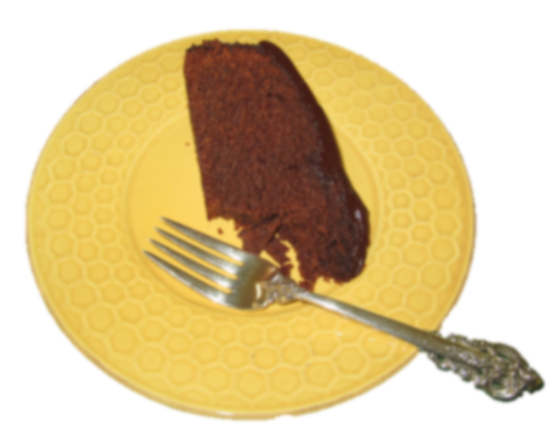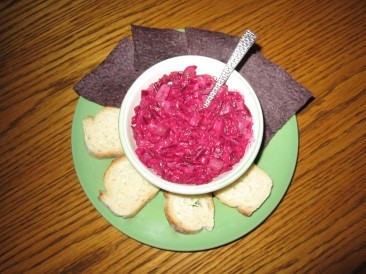We have almost until the end of September to prepare for Rosh Hashanah this year, although as Rabbi Taff always says, the holidays aren’t late—they are always on time! For this year’s celebratory meals I am sharing two dishes to serve before it’s time for dessert (both red, coincidentally) and a new twist on honeycake.
Beets are served around the world for the holiday because they are naturally sweet. In addition, the Hebrew word for beet, “silka” sounds like “siluk”, the word for “removal”—expressing hope that our adversaries will disappear in the year ahead. There’s no question about why honey is a favored ingredient for High Holiday meals and for dipping apples and yom tov challah.
While visiting Utah on our cross-country drive this summer, Larry and I learned that the state emblem is the beehive, chosen because it represents industry and perseverance. The big beehive that decorates the front of the Utah capitol building will now come to mind when I am (industriously) adding honey and sweetness to holiday dishes.
I have been looking for unsalted parve margarine to use in baking ever since the Fleischmann’s product disappeared locally quite a long time ago. Recently, while shopping for ingredients for my recipe testing, I spotted the Saffola version at Bel Air Market. This “new” discovery will surely be appearing in some future baking recipes in this column. Stay tuned! Read more for recipes.
ZHANNA’S BEETS
This dish has an interesting history. I requested it from Zhanna Elkinbard, one of the first Soviet Jews to settle in Sacramento in the wave that came in the’70s. While the Elkinbards lived here we enjoyed many tasty delicacies that reflected their culinary roots. Since it features beets, this is quite literally such a recipe! Perfect for adding colorful sweetness to a holiday menu from Rosh Hashanah through Sukkot. Serve as a side dish or as an hors d’oeuvre with crostini or corn chips--not very Russian but a very tasty match!
About 2 C
1 16-oz can beets, drained and coarsely grated OR
1 ½ C cooked, grated fresh beets, maybe 2 medium beets *
½ C dill pickle, cut in ¼” dice (about 3 medium pickles)
½ C mayonnaise (can use light mayo) or Miracle Whip (Zhanna’s preference, not mine)
Fresh-squeezed lemon juice to taste
Combine all ingredients in a bowl and chill.
*To roast beets, place them in an ovenproof casserole, add ¼” of water and cover tightly. Roast at 375° until the sharp point of a paring knife penetrates each beet easily. (Time will depend on the size of the beets, probably 35-50 minutes.)
SPICY RED CABBAGE
Here’s a lovely accompaniment for your holiday brisket. I adapted this from the Plugras Butter website, which no longer offers it.You can substitute 2 8-oz. packages of shredded red cabbage to streamline your preparation. Of course you can use butter if you aren’t serving it with meat.
Serves 6
1 small head red cabbage
2/3 C water
6 TBSP parve unsalted margarine
2 Granny Smith apples,
peeled, cored and sliced about ¼” thick
4 whole cloves
1 tsp salt
2 TBSP brown sugar OR
scant 2 TBSP honey
2 TBSP fresh lemon juice
1 TBSP balsamic vinegar, or to taste
Shred the cabbage. Place it in a deep skillet with the water, 2 TBSP of the margarine, the apples, cloves and salt. Cover and simmer until cabbage is tender but not mushy. (Start checking after 20 minutes.) Add rest of the margarine, brown sugar or honey and lemon juice. Cook a few more minutes to blend flavors, then add vinegar and adjust other seasoning to taste. Serve hot.
This may be prepared a day ahead and refrigerated. It reheats well in the microwave.
CHOCOLATE HONEY BEE CAKE
This cake is adapted from a recipe presented by Nigella Lawson on THE COOKING CHANNEL; the glaze recipe was developed by chocolate maven Alice Medrich. Note the caveat about leaking batter. In testing this recipe twice, the leakage only happened once, but the “ounce of prevention” is surely the route to follow-- just in case.
12 or more servings
Cake:
1 1/3 cups soft light brown sugar
1 C (2 sticks) unsalted butter, softened
2 eggs
1 tsp vanilla extract
½ C honey
1 1/2 C all-purpose flour
1 tsp baking soda
Scant ½ tsp salt
1 TBSP cocoa
(shake through a strainer into processor)
4 oz semisweet chocolate broken into
pieces and melted over hot water
1 C boiling or very hot water
Chocolate Honey Glaze:
6 oz bittersweet chocolate, cut up
4 oz (l stick) unsalted butter
3 TBSP honey
Assemble all cake ingredients, setting the melted chocolate aside to cool a bit before mixing.
Adjust oven rack to middle position and preheat the oven to 350° (325° convection). Grease or spray a 9” x 3”deep springform pan or one with a removable bottom and place a parchment round in the bottom. Wrap the bottom of the pan with a layer of heavy duty foil (or a double thickness of regular weight foil) to contain any batter that may leak from the pan.
In the order given, place all the ingredients except the water into the bowl of a food processor fitted with the metal chopping blade. Process until smooth, scraping down the sides of the bowl as necessary. With the motor running, add the water, processing until the mixture is homogeneous. Pour batter into the prepared pan.
Bake the cake about 55 minutes to an hour, or until a tester comes out clean. Let the cake cool completely in the tin on a rack. Don’t worry if there’s a crack on the top of the cake; the glaze will fill flow in and cover it.
Meanwhile, make the glaze. Combine all ingredients in a glass or metal bowl and set over hot, not boiling water. Stir occasionally until butter and chocolate have melted and you can stir the mixture to a smooth consistency. Allow to cool a little but be sure it’s still fluid when you’re ready to glaze the cake (just warm it slightly if necessary).
On your cake platter or stand place four strips of parchment or waxed paper to form a square outline. This will protect the plate from icing dribbles. Remove the sides of the pan, invert the cooled cake onto a rack and remove the paper liner. Invert cake right side up onto the prepared serving plate, making sure the bottom edges sit on the protective paper. Pour the glaze over the center of the cake, letting it spread over the top run down the sides. It doesn’t have to cover the sides evenly or completely, but you can spread and smooth it if you think the cake will be more attractive that way. Allow glaze to set at room temperature, scrape off any dribbles from the paper and then carefully slide out the paper. Serve within a few hours or store the cake in a covered container at room temperature for up to two days. Press a piece of foil or plastic wrap over the exposed interior of the cake to keep in the moisture. Leftovers can be successfully frozen.


